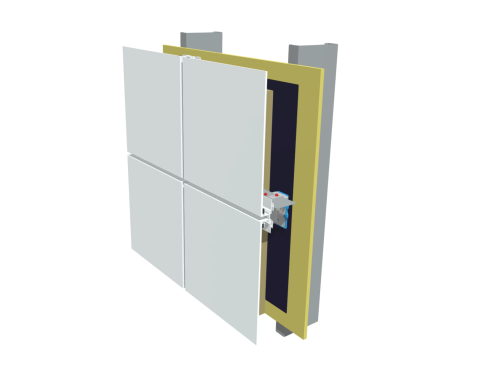Key clauses of the general conditions; complementarity
Although it didn't seem like it at the time, one of the best parts of my CSI chapter's certification classes was reading the A201 - not selectively, but the whole thing, beginning to end. Being the heart of the construction contract, anyone who works on a project should know what's in it. I can't quote every part of it, but it's familiar enough that I can find what I'm looking for fairly quickly. I don't deal with much of it, e.g., claims and time requirements, but there are a few parts that I find of particular interest.
We'll start with what I call the complementary clause.
§ 1.2 CORRELATION AND INTENT OF THE CONTRACT DOCUMENTS
§ 1.2.1 The intent of the Contract Documents is to include all items necessary for the proper execution and completion of the Work by the Contractor. The Contract Documents are complementary, and what is required by one shall be as binding as if required by all; performance by the Contractor shall be required only to the extent consistent with the Contract Documents and reasonably inferable from them as being necessary to produce the indicated results.
Most architects are aware of this requirement, which is quite useful when something is on the drawings but didn't make it into the specifications. Clearly, when that happens there has been a communication failure. The specifier might not have seen something on the drawings, or it might have been added unbeknownst to the specifier. Regardless of the reason, this clause has saved many an architect when something was missed. It's obviously a useful fallback requirement, but it shouldn't be relied on to cover mistakes that should have been avoided. It is quite powerful, but it also is limited. Let's look at a couple of examples.
The bidding documents show a bathroom on the drawings, and in the bathroom, floor tile is indicated. Unfortunately, there is no specification for tile. No problem, right? The complementary clause requires the contractor to provide floor tile! Of course, there is that pesky provision that requires to contractor to ask the architect about obvious conflicts, but it's pretty much impossible to prove the contractor saw this error and failed to call the architect. Now we're in construction, and the contractor discovers the error. Because the tile should have been included in the bid, and because of the complementary clause, the contractor is on the hook; the tile must be provided. That is true, but without specifications, the contractor is free to choose any type of tile. The contractor can claim the bid was based on plastic tile on sale at the dollar store, instead of the really cool stuff the architect wanted, priced at $20 per square foot. Furthermore, without installation instructions, the contractor could argue that simply laying the tile on the floor is all that's required. A silly example, to be sure, yet it emphasizes the importance of specifications as a way to ensure you get what you want.
Perhaps less common is having specifications for something that does not appear on the drawings, but it does happen. Let's use fire extinguisher cabinets for this example. The specifier knows the project has them, and includes the specification section. As long as the locations are on the drawings, it doesn't matter to the specifier if there is but one, or if a hundred will be required.
This time, when the "missing" fire extinguisher cabinets are discovered, the contractor says, "The locations weren't shown, so I assumed only one was needed." The specifications are there, so the correct unit is provided, but instead of a hundred, the contractor included only one.
Another aspect of the complementary clause isn't so obvious. Note that the contractor is required to provide "all items necessary for the proper execution and completion of the Work". This applies not only to tile and fire extinguisher cabinets, but to all the stuff used to hold everything together. It may be possible to specify absolutely everything used in a building, but given the number of products used, it's likely that some things are not specifically addressed. Instead, they are considered to be components of an assembly that are indirectly specified by way of reference standards or manufacturers' instructions. AIA's position on this is stated in the AIA Document Commentary for the A201: "The contractor is expected to make reasonable inferences from the contract documents. When the documents show wall partitions covered by drywall, for example, it may be inferred that some reasonable method will be used to attach the drywall to the underlying framework."
However, what a "reasonable method" is, without the support of specifications, is debatable. For common products, such as drywall, it shouldn't be difficult to show that Gypsum Association standards and similar references would be reasonable. And while the same argument could be used for installation of ceramic tile, the contractor could reasonably argue that without specifications, the most basic of the many installation options available in Tile Council of North America are all that is required. Still, that's a great improvement over simply laying the tile on the floor!
The complementary clause is powerful, but there is no substitute for showing everything required both on the drawings and in the specifications.
© 2016, Sheldon Wolfe, RA, FCSI, CCS, CCCA, CSC
Agree? Disagree? Leave your comments at http://swconstructivethoughts.blogspot.com/
When you subscribe to the blog, we will send you an e-mail when there are new updates on the site so you wouldn't miss them.






